Lakshadweep’s Coral Homes
First published in Sanctuary Cub,
Vol. 44
No. 9,
September 2024
Corals were used across the Lakshadweep archipelago as building material. These fascinating lifeforms, a nursery for myriad marine life and vital for the livelihoods of generations of islanders, need to be restored. Text and photographs by Madhumay Mallik.
Walking along the beaches of Amini, one of the 10 habitable islands in the Lakshadweep archipelago, I noticed the elderly, especially men, filling sacks with coral rubble. Collected from across the coastline, the rubble is placed along eroded patches to breach the force of incoming waves and sustain the shores’ integrity.
Lakshadweep’s Coral Homes
Not long ago, corals, especially the hard variety scientifically known as Scleractinia, were commonly used as a building material here. Mir Alam, the owner of a house I visited explained, “Rich in calcium carbonate, coral rocks were among the most abundant resources across the islands and worked as an excellent and durable material for construction.” Slates cut from the coral were used for roofing, with a lime skim coat for durability.
While walking along the streets, one cannot miss the shiny white coat of most building exteriors here. This comes from lime acquired by grinding coral rubble. The white coat reflects sunlight to keep the indoors cool – crucial for an island settlement exposed to the elements.
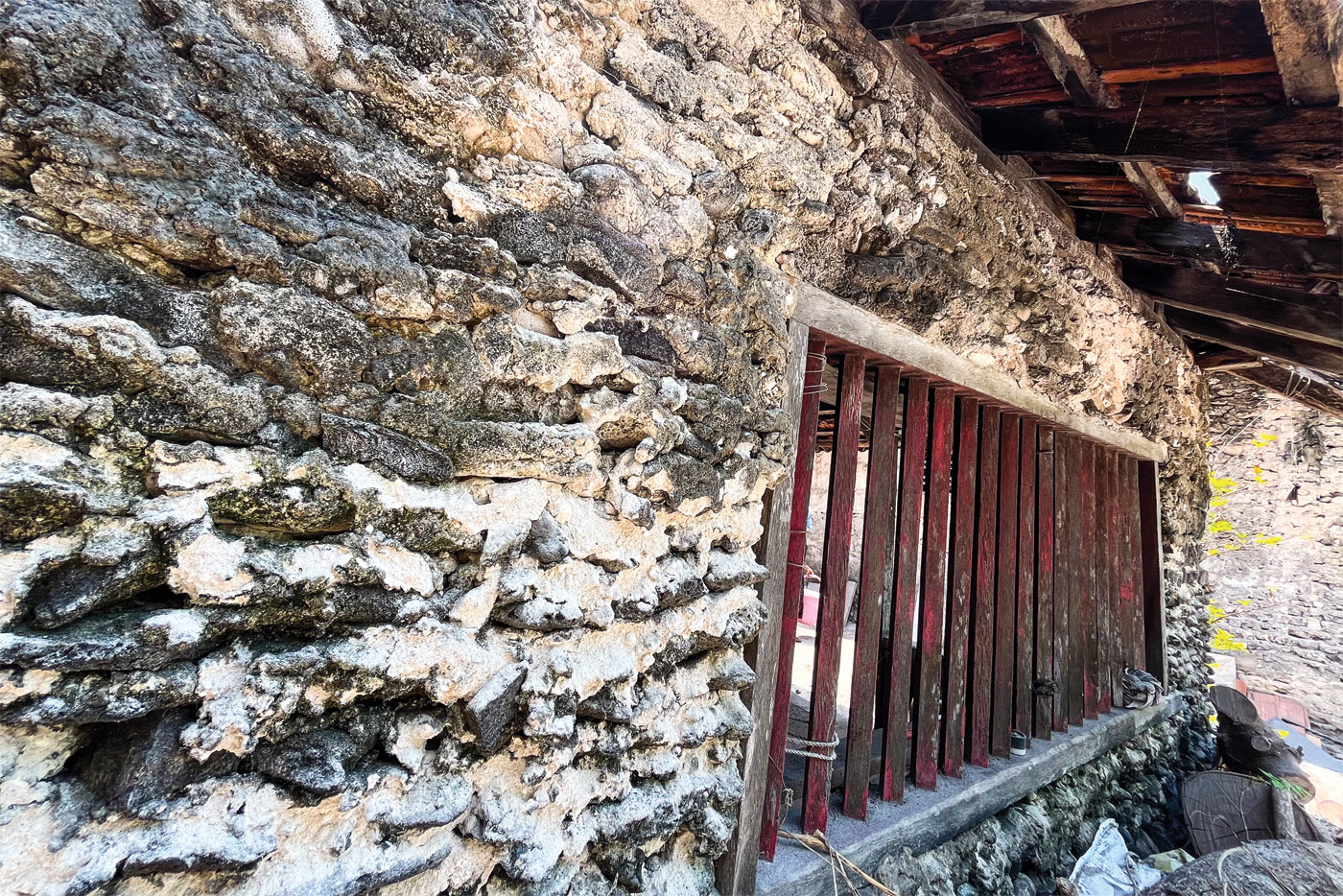
Coral house in Lakshadweep.
The building blocks of underwater rainforests, coral rocks have long been a prominent construction material in coastal settlements worldwide. In the Maldives, coral use for construction has been recorded as far back as 600 BCE.
Changing Times
About 67.36 per cent of houses in Lakshadweep have walls made of porous bricks produced from a mix of coral rocks, sand and cement. These buildings have since been weathered by the wind and sea, and have now been marked as “prone to collapse” in case of severe earthquakes.
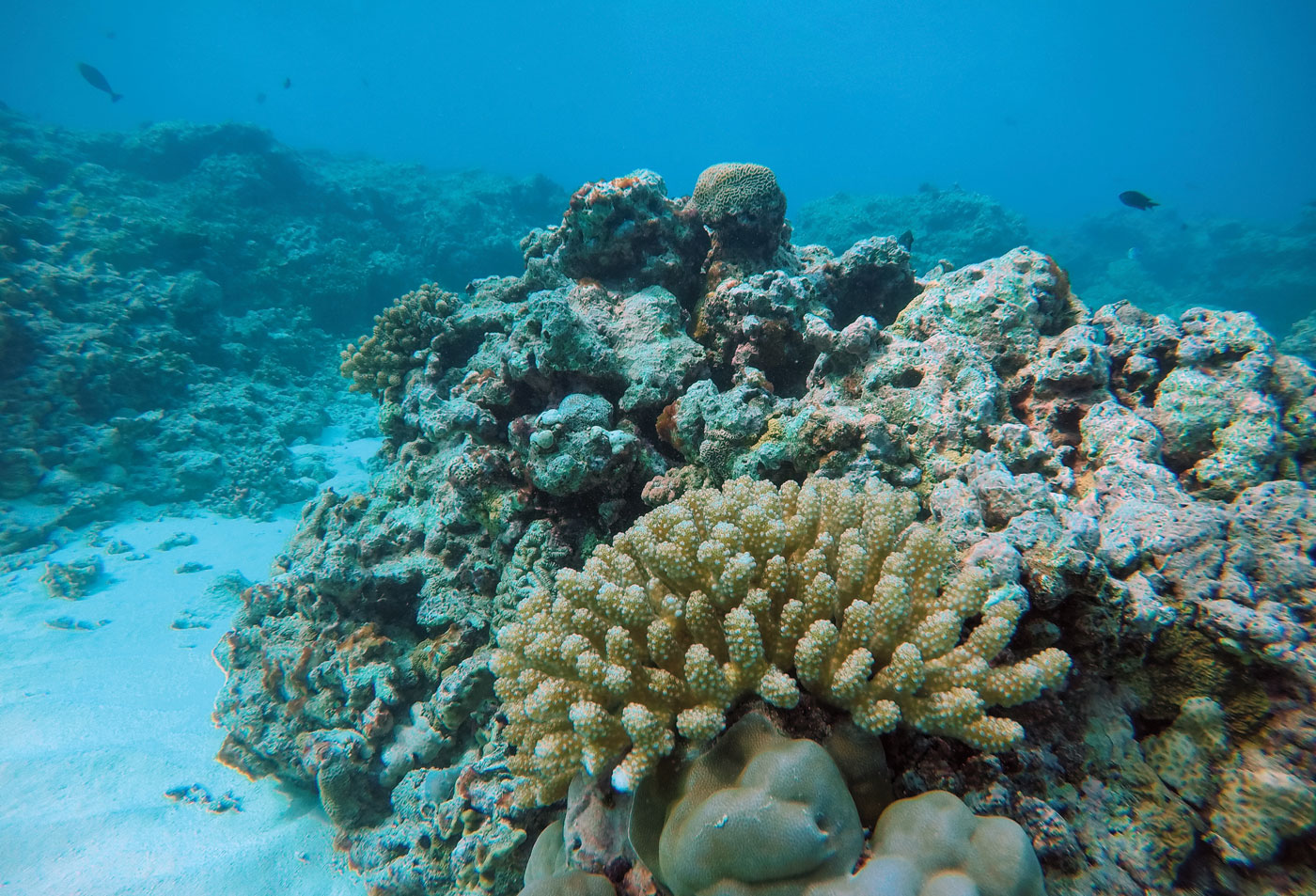
Coral sea bed in the waters off the islands.
The Lakshadweep Action Plan on Climate Change notes that ecological conditions have made it difficult to get locally available construction materials such as coral. The Coastal Regulation Zone Notification of 1991 correctly prohibits the use of corals and sand from beaches and coastal waters for construction and other purposes. The Lakshadweep Building Development Board was set up to procure materials from the Indian mainland. Islanders have had access to conventional materials such as cement only recently. But their availability depends on expensive transport from the mainland.
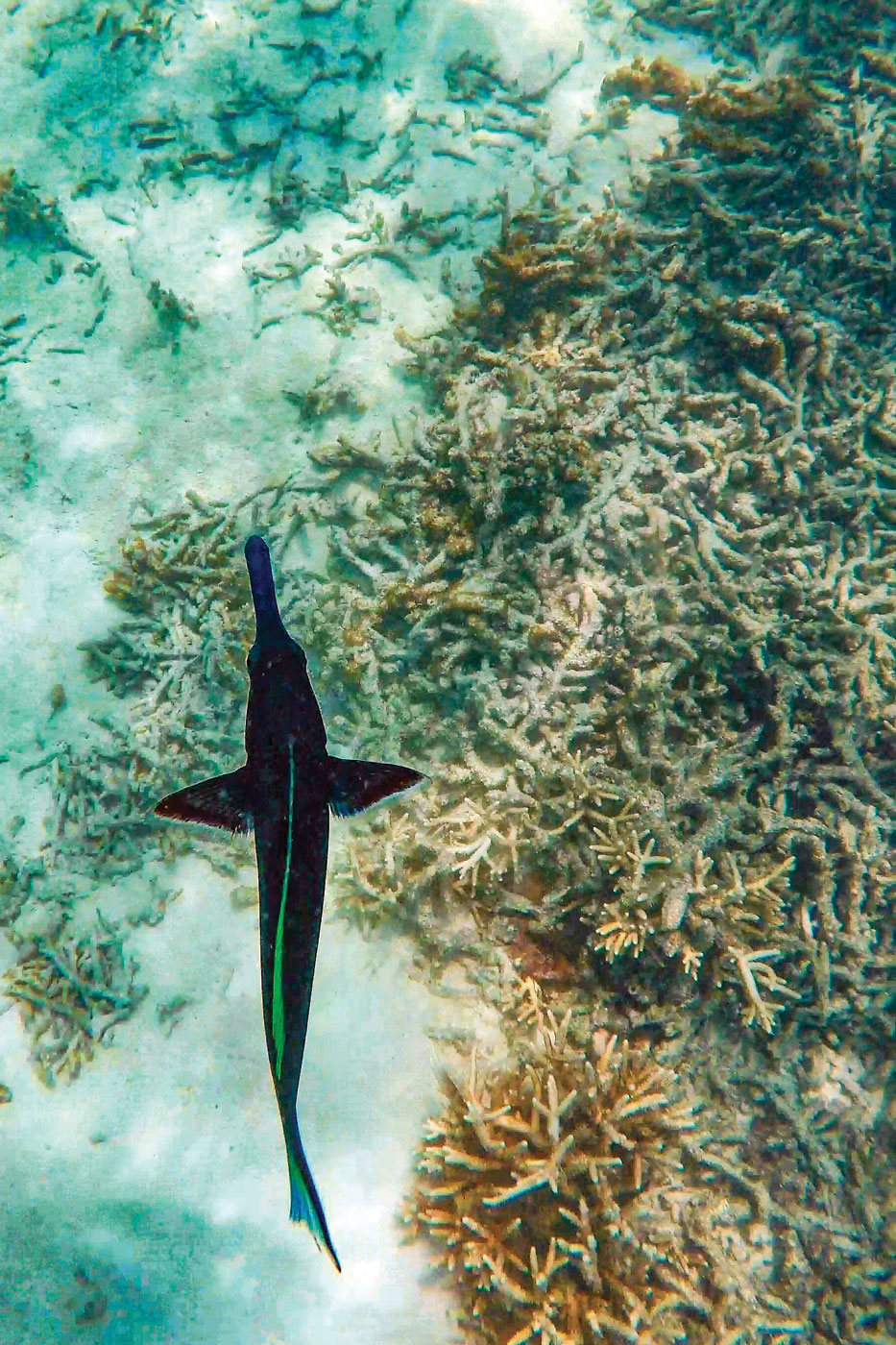
Reef fish swimming over the coral bed.
The Last Corals
The 1998 El Nino phenomenon caused a drastic rise in sea temperature and impacted almost 90 per cent of the coral reef here, resulting in massive bleaching events and coral death. Several species of hard and soft corals are threatened with local extinction.
Given how destructive coral mining and harvesting can be, and the need to protect what little coral cover is remaining, it is vital that the harvesting and use of corals continues to be banned. Sustainable economical building material options must be made available for locals.
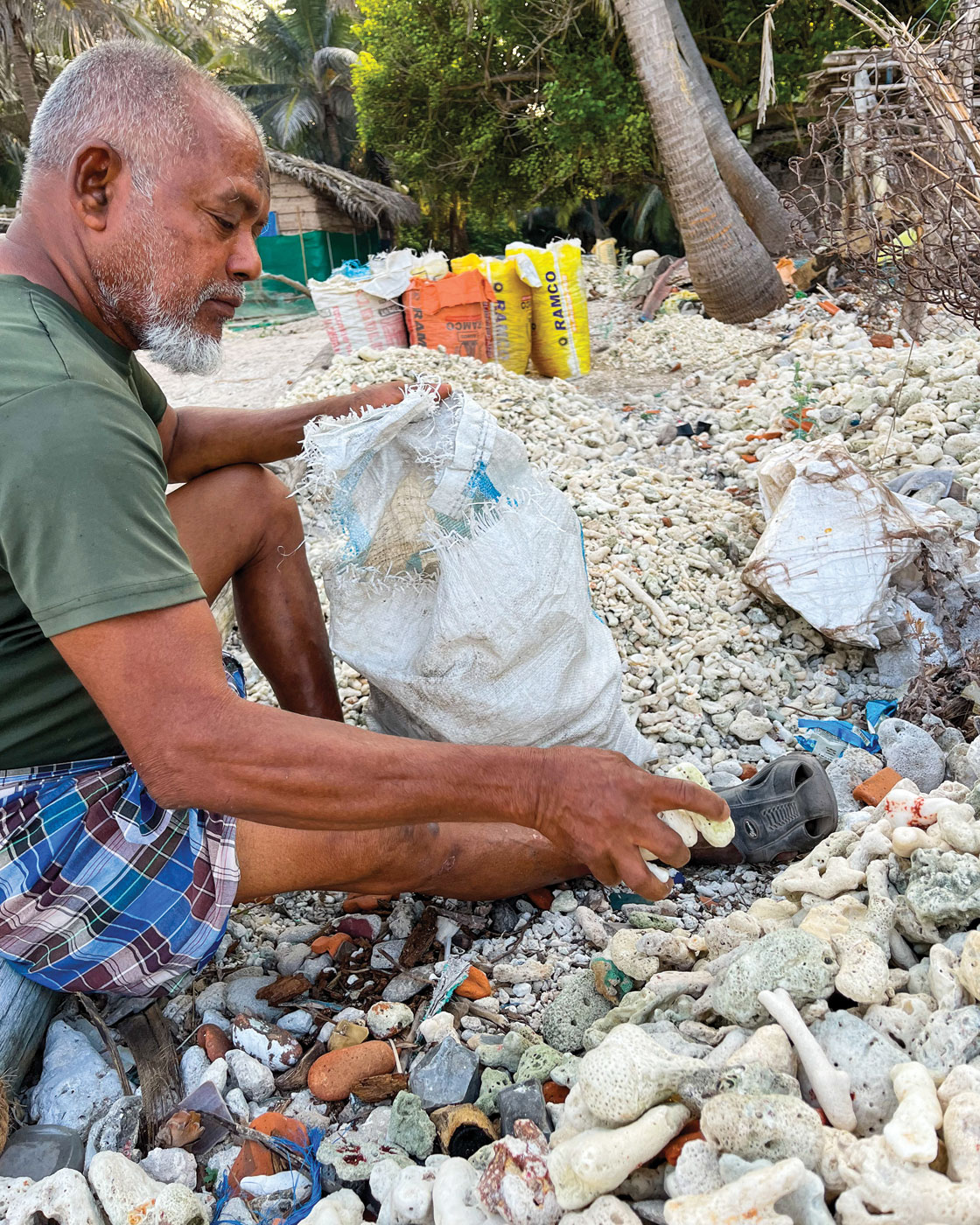
Coral rubble collection in Amini Islands, Lakshadweep.
“Even if we wanted to, and there was no legal constraint, there aren’t enough corals now to harvest for construction,” exclaims Alam. Lakshadweep has lost almost 25 per cent of its coral reefs since 1998. The rising sea temperatures across 2023 and 2024 have also had a severe impact and almost 80 per cent of the existing reefs show signs of bleaching. Intensifying cyclones and rising sea levels, warn scientists, foretell a potential wipeout of entire islands – including the coral atolls that shield humans.
Tips On Visiting
~ Since it is a restricted area, you need a visiting permit from the administration, authorised agents or online.
~ The best time to visit Lakshadweep is between October and March.
~ While diving or snorkelling, avoid disturbing coral reefs, and respect marine life. Don’t leave behind any waste, especially plastic!
Revisiting Our Relationship
Live corals from the Lakshadweep atolls have been transported in the past, in a first-of-its-kind attempt, to revive the degrading reef systems in Mithapur, Gujarat. Spearheaded by the Wildlife Trust of India and supported by the Gujarat Forest Department and Tata Chemicals Limited, the translocation of Acropora corals has since proved successful – reviving degraded reefs and enhancing the harvest of marine catch for local fishermen.
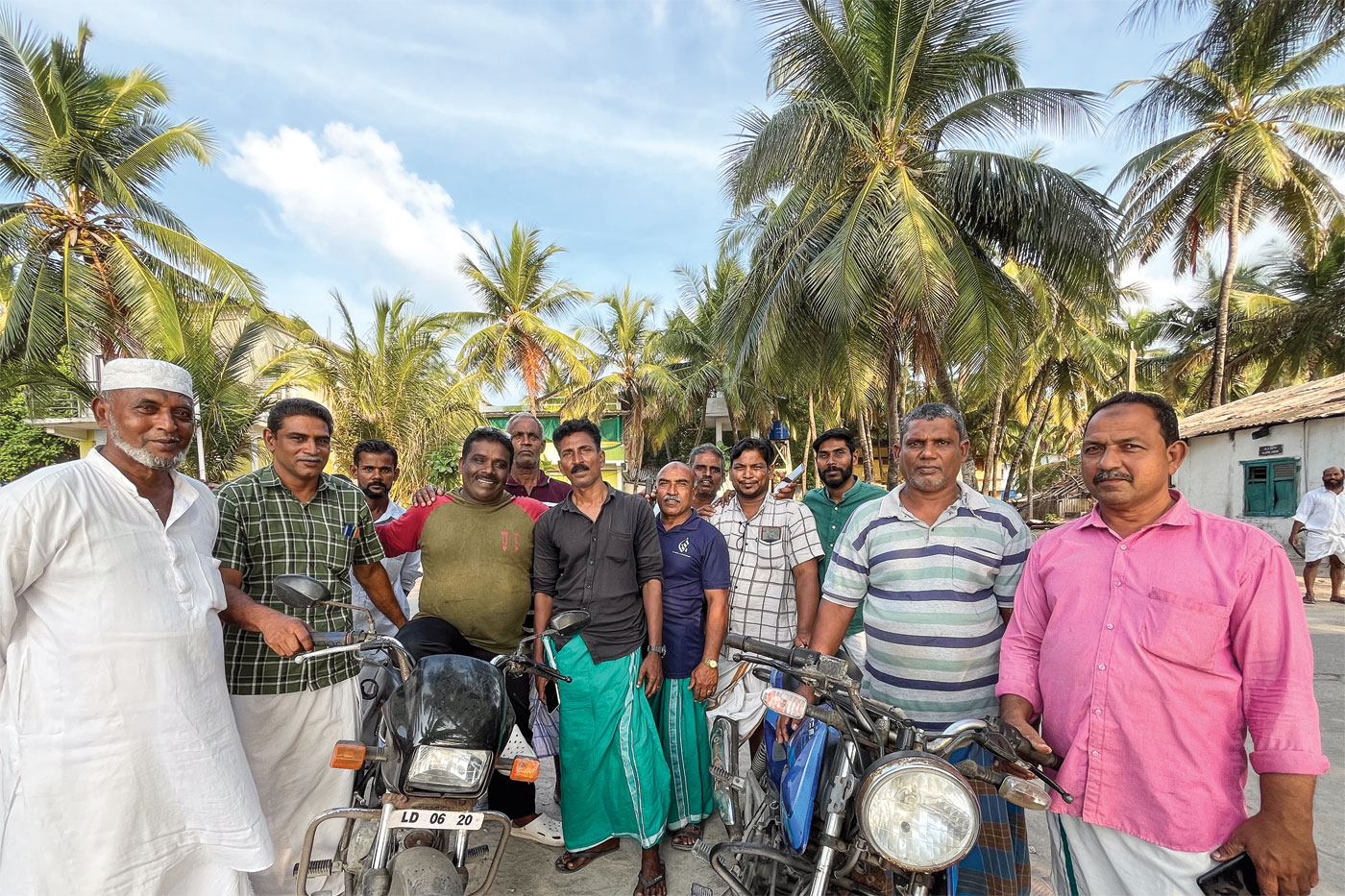
The community of the Lakshadweep archipelago in Amini Islands.
Corals have always been intertwined with the history, lives and ecosystems of the Lakshadweep archipelago. We must do all it takes to protect and revive them!
Madhumay Mallik is a conservation writer, photographer and graphic designer, based in Noida, India. He is fascinated by insects and posts on Instagram as ‘smaller.wonders’.






